The Audio Note (UK) AN-K/SPe loudspeakers have arrived from Peter Qvortrup at Audio Note (UK)!
Woo hoo - I've been looking forward to these arriving! 🙂
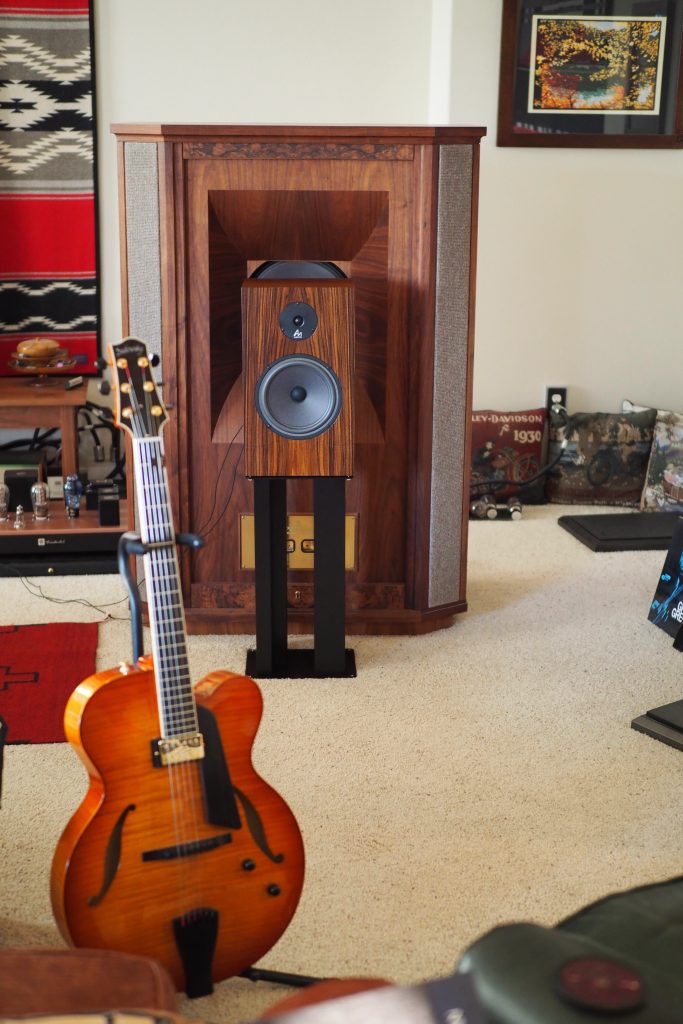
Audio Note (UK) AN-K/SPe loudspeaker atop AN-J loudspeaker stand (in front of Westminster loudspeaker).
I promise to get some better photos for you soon, as these are gorgeous loudspeakers with their satin finished palisander (rosewood) book matched veneers, and my accompanying photos just don't do them justice.
There are four models of the Audio Note (UK) AN-K loudspeakers, the AN-K/D, the AN-K/LX, the AN-K/SPe, and the AN-K/SPx SE.
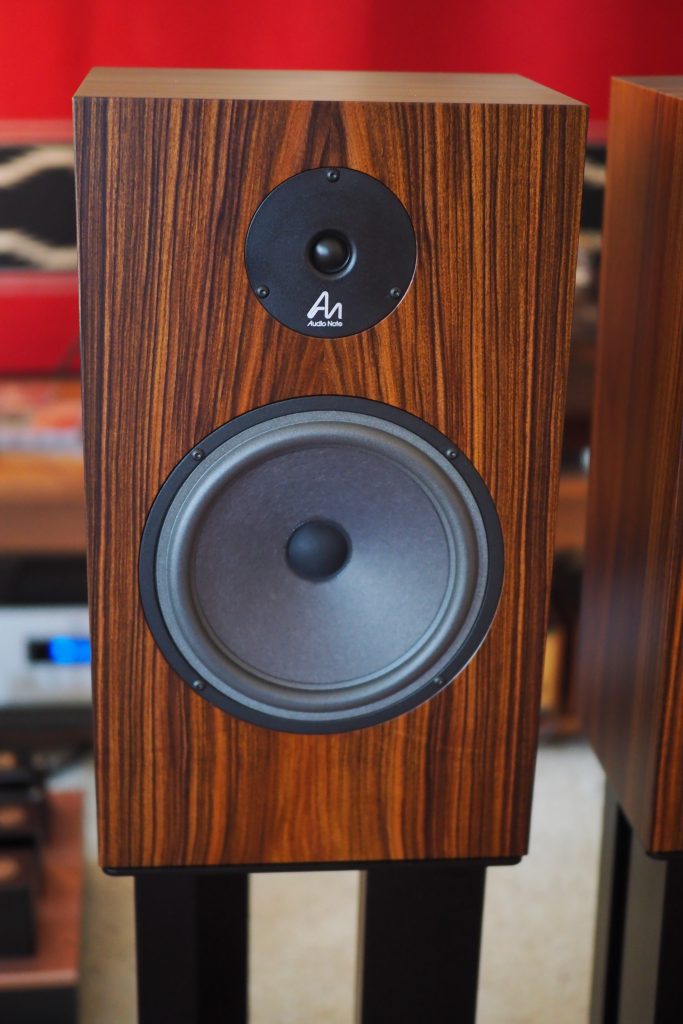
Audio Note (UK) AN-K/SPe loudspeakers.
The model that Peter sent are the AN-K/SPe version, with "3/4-inch tweeter & 8-inch paper bass driver with copper voice coils, 90 dB efficient, AN-SPe internal silver cable, internal crossover, copper inductors, birch ply cabinet, real wood veneers." Here's a link to the owner's manual.
I'll tell you all about the details of the four different models in a future article, but the basic differences are that the AN-K/D version has combination chipboard and MDF cabinets with a black ash veneer, while the AN-K/LX, the AN-K/SPe, and the AN-K/SPx SE have birch ply cabinets with multiple choices of wood veneers.
The crossovers also differ among the four models in the choice of internal cabling, inductors, capacitors, etc.
The AN-K model designations reflect the type of internal cabling used in the crossovers, with the AN-K/D having AN-D internal copper cables, the AN-K/LX having AN-LEXUS-LX internal copper cables, the AN-K/SPe having AN-SPe internal silver cables, and the AN-K/SPx SE having AN-SPx internal silver cables.
The AN-K/D, AN-K/LX, and AN-K/SPe all have copper inductors, while the AN-K/SPx SE have silver inductors.
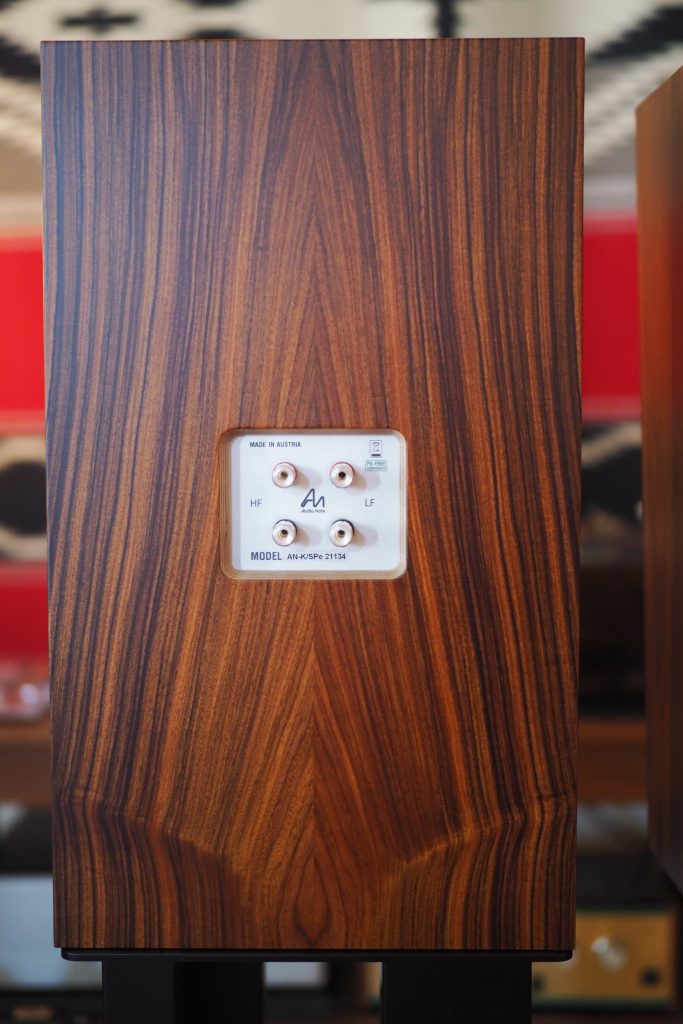
Audio Note (UK) AN-K/SPe loudspeakers (rear).
The dimensions of the Audio Note (UK) AN-K/SPe loudspeakers are approximately 10 3/4 inches wide, 18 1/2 inches tall, and 7 1/2 inches deep, and are described by Audio Note (UK) as "compact bookshelf loudspeakers".
As you can see in the above photo, there are four binding posts for loudspeaker cables, one pair for the high-frequencies, and one pair for the low-frequencies, for those who wish to bi-wire or bi-amp the loudspeakers.
Silver wire jumpers are supplied for those who wish to use only a single pair of loudspeaker cables, which is usually my preference.
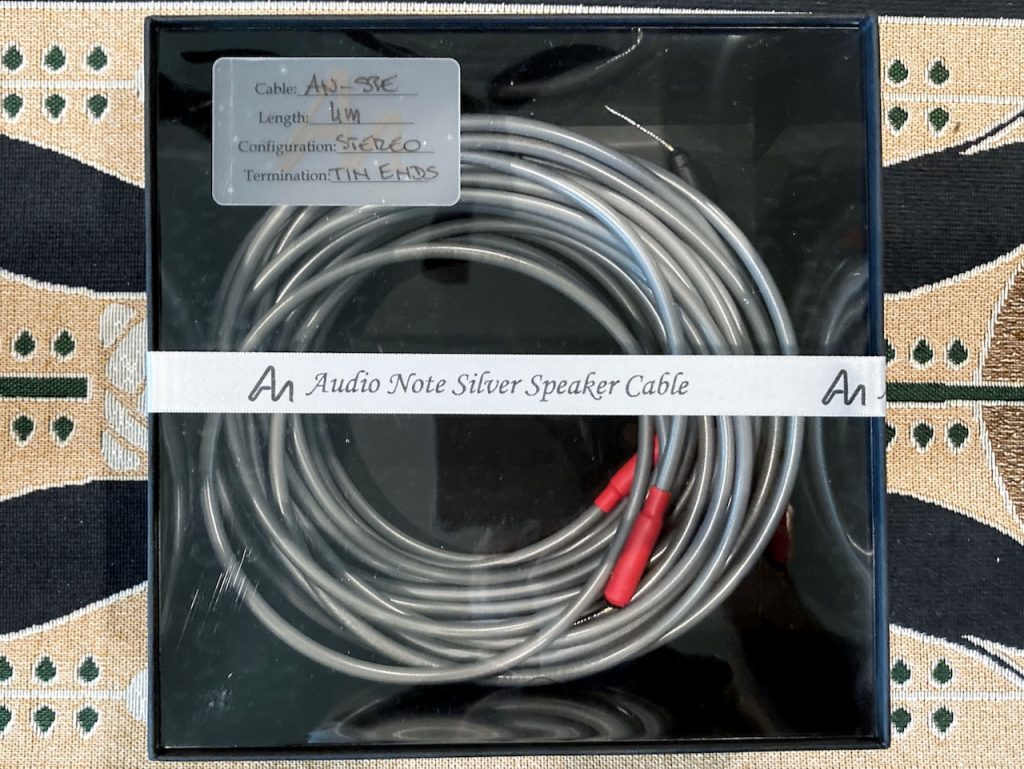
Audio Note (UK) AN-SPe silver loudspeaker cables.
I've already reported on the AN-SPe silver loudspeaker cables (above) in Positive Feedback Issue 116, and those speaker cables should be an excellent match to the AN-L/SPe loudspeakers' internal AN-SPe silver wiring.
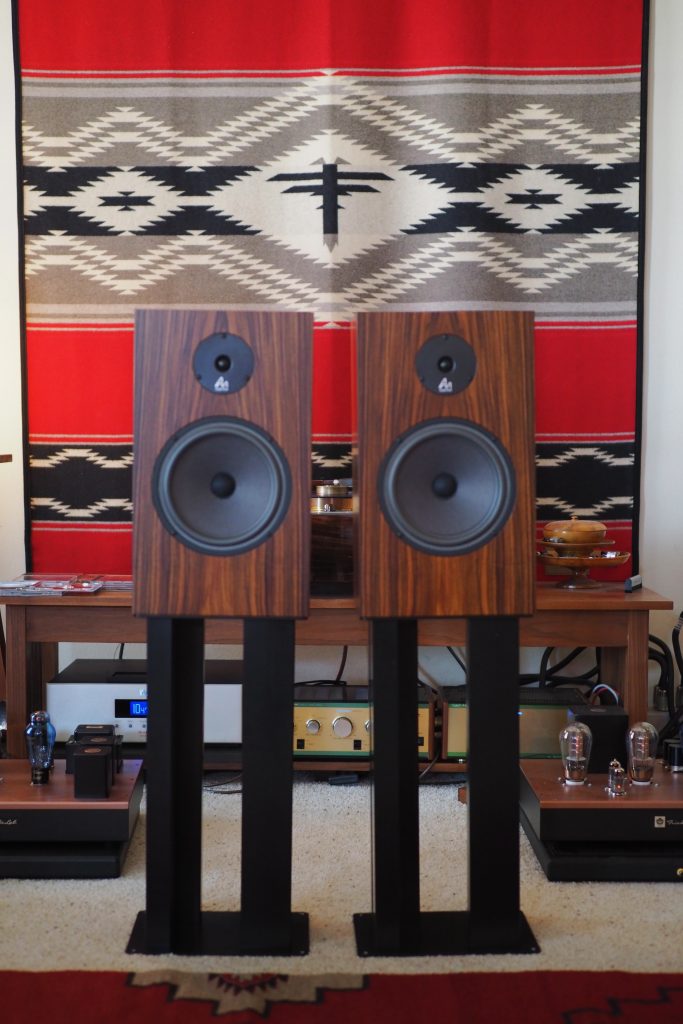
Audio Note (UK) AN-K/SPe loudspeakers sitting atop the AN-K stands.
The Audio Note (UK) AN-K/SPe loudspeakers sit atop Audio Note (UK) AN-K loudspeaker stands, which are four-leg, high-mass, black painted steel speaker stands that are 21-inches high.
The AN-K stands come in a flat pack and require assembly. The instructions are well written, and I had the stands assembled in no time. Audio Note (UK) recommends filling the stands "with fine lead shot and fine sand to increase mass as much as possible."
I'll provide more detailed photos of the stands in future articles.

An Audio Note (UK) AN-K/SPe loudspeaker atop an AN-K loudspeaker stand.
Audio Note (UK)'s design approach to the Audio Note (UK) AN-K/SPe loudspeakers is more akin to the sort of approach used by luthiers of stringed instruments to deliver the most musical instrument possible, compared to typical audiophile loudspeakers where the design focus is often to provide an exaggerated presentation of visuospatial recording artifacts at the expense of overall musicality.
The Audio Note (UK) AN-K/SPe loudspeakers are designed specifically to provide the listener with all of the life and emotion inherent in a recorded musical performance, which is exactly what I desire as a listener who wants to enjoy albums that span our recorded music canon of the acoustic (1877 to 1925), electric (1925 to 1945), magnetic (1945 to 1975), and digital (1975 to present) eras of the recording arts.
The Audio Note (UK) AN-K/SPe loudspeakers are a two-way design with a frequency range of "50Hz to 20Khz, +/-6dB in room", and have 90dB sensitivity with a 6 Ohm load, which allows for a wide range of amplification choices.
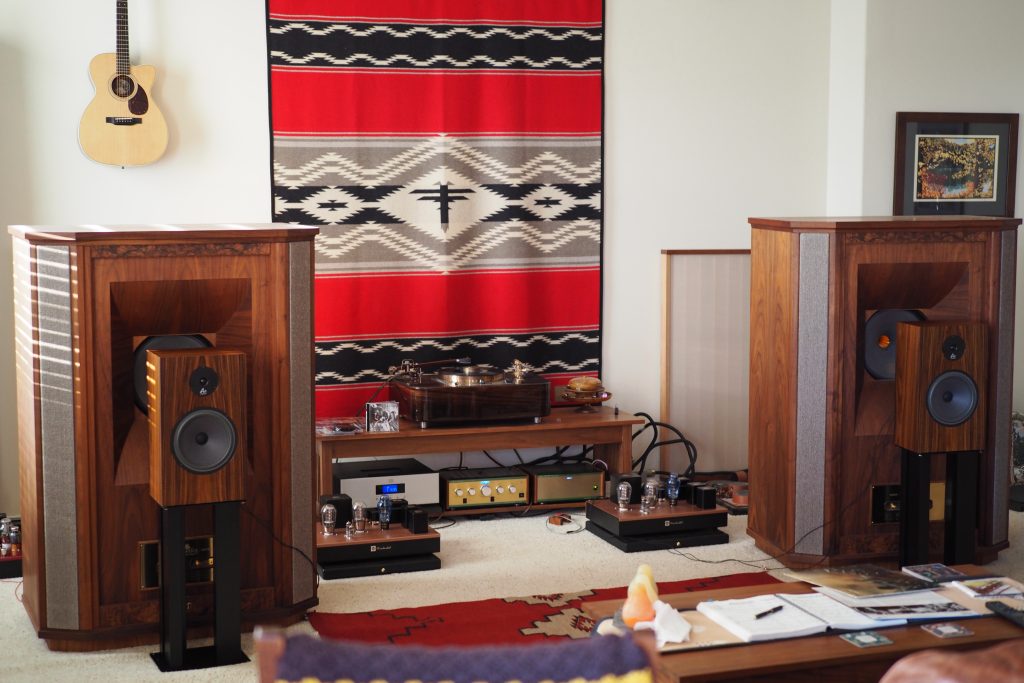
Audio Note (UK) AN-K/SPe loudspeakers.
To make sure everything internal in the Audio Note (UK) AN-K/SPe loudspeakers survived their arduous journey to Jeff's Place from the UK, I hooked them up briefly to the Triode Lab 2A3 P-SET monaural amplifiers this morning that I am currently writing a review about for Positive Feedback.
I should mention that the Audio Note (UK) AN-K/SPe loudspeakers are designed to be placed close to room boundaries, rather than as you see them in my photo above, where they are sitting well out into my living room in front of my Westminster loudspeakers (although you might be able to make a case that the Westminsters are big enough to function as room boundaries - humor alert!).
I just did this setup as a quick operational test to make sure everything was working ok before I rearranged my 'guitar room', where I plan on setting up the Audio Note (UK) AN-K/SPe loudspeakers as they are intended, close to room boundaries.

Analog source is my CTC Garrard 301 with the Audio Note (UK) Io I MC phono cartridge, AN-S4 SUT, and AN-V silver interconnects, more HERE.
Having said that, they actually sound remarkably good right out of the box in this setup, being very musical sounding on the Joe Pass For Django LP I'm listening to as I write this, with the 8 watt Triode Lab 2A3 parallel-SET monaural amplifiers easily driving the Audio Note (UK) AN-K/SPe loudspeakers to live-like levels.
I suspect those who highly value visuospatial performance will also be impressed with the Audio Note (UK) AN-K/SPe loudspeakers, as even in this quick operational test they exhibited excellent imaging, a wide & deep, and life-sized soundstage on For Django.
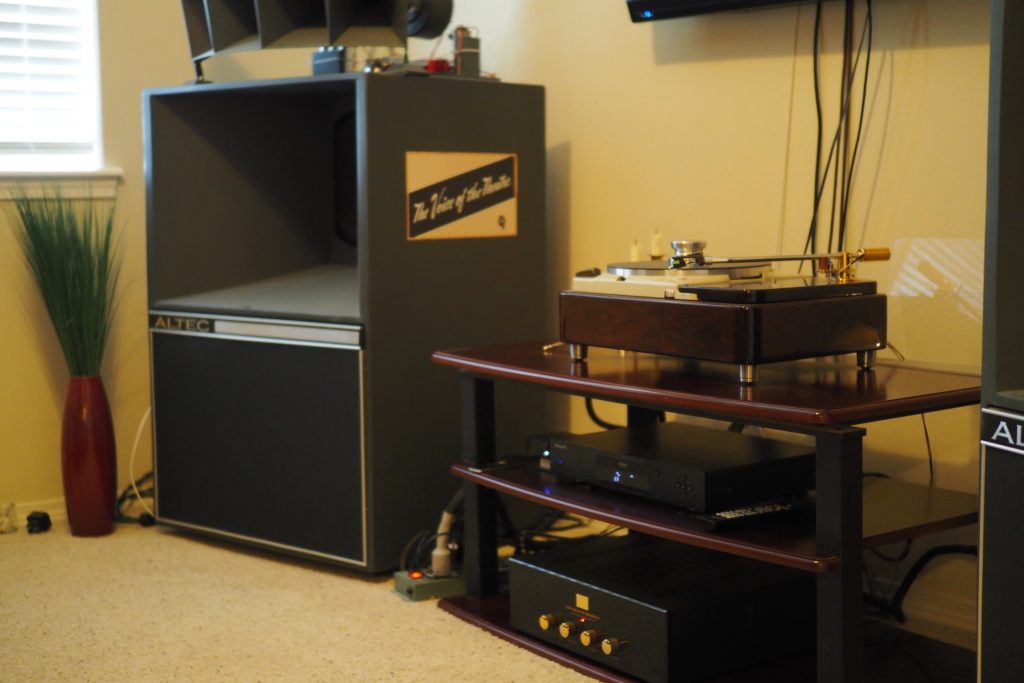
Audio Note (UK) Oto Phono SE Signature integrated amplifier with vintage Altec A5s - magic!
Two of my three current audio systems - my audio-visual system (above) and my bedroom system (below) - are set up with the loudspeakers close to room boundaries (in room corners), just as the Audio Note (UK) AN-K/SPe loudspeakers are intended to be set up.
Note: By the way, I have a 'long term report' about half-written about the Audio Note (UK) Oto Phono SE Signature integrated amplifier, which I've been listening to for nearly 2 years now. How time flies.
Have I mentioned the Audio Note (UK) Oto Phono SE Signature integrated amplifier is a 'magic' match to my vintage Altec loudspeakers?
With both my custom 'Stokowski' Altec loudspeakers and my Altec A5 loudspeakers the Oto is really amazing.
More to come on the Oto, hopefully in the near future.

Vintage Altec Corona 832A loudspeaker in room corner in my bedroom system.
What I like about corner placement is it makes for a very friendly choice for freeing up living space, compared to the room dominating audiophile-style approach of setting up loudspeakers in a 'rule of thirds' or 'rule of fifths' position in rooms in order to accentuate the visuospatial attributes of recordings.
Besides making for a space saving and more visually pleasing loudspeaker placement for most living arrangements, the room boundary placement approach also effectively takes the most deleterious room effects out of the equation, which is part of the reason that Audio Note (UK) loudspeakers always sound so good at audio shows where demo room quality varies all over the place.
The Audio Note (UK) AN-K/SPe loudspeakers are quite a ways out in my review queue, so it will be a while before I write the full review of them for Positive Feedback.
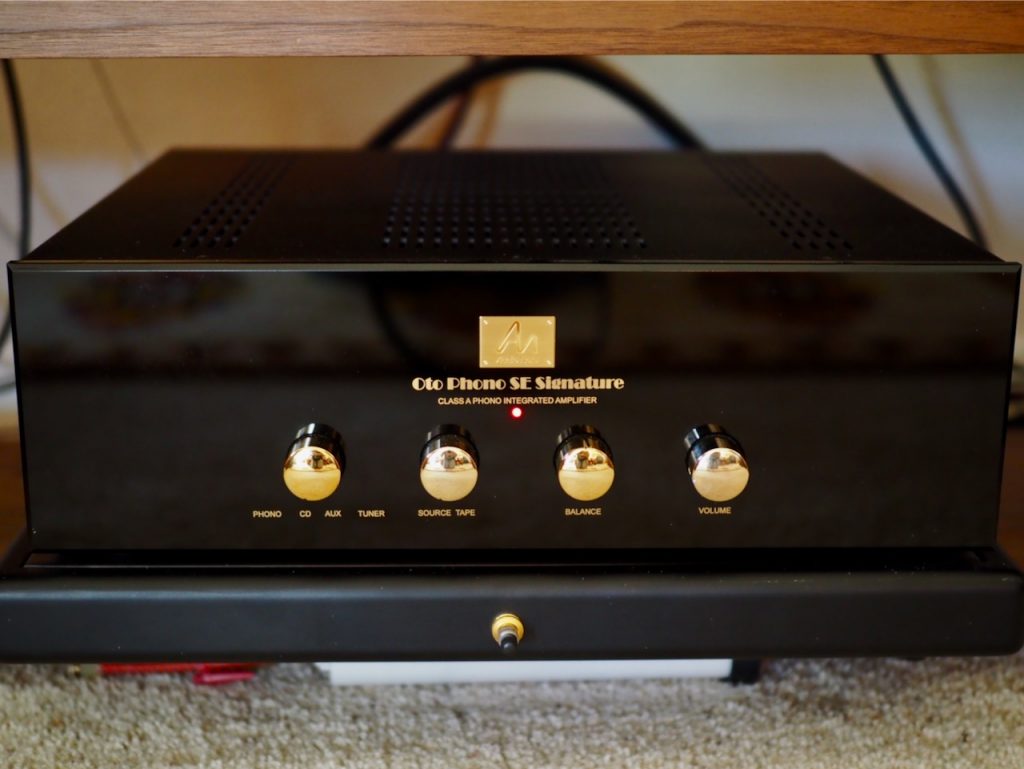
The Audio Note (UK) Oto Phono Signature integrated amplifier.
In the meantime, I plan on telling you more in upcoming posts about their design philosophy, with updates on their performance with the Audio Note (UK) Oto Phono SE Signature integrated amplifier, and the Audio Note (UK) CD 2.1x/II Level Two Red Book CD player, as a complete system.

Audio Note (UK)CD 2.1x/II Red Book CD player.
To mix things up a bit I'll also tell you about their performance with the Audio Note (UK) Meishu Phono Silver Tonmeister 300B SET integrated amplifier and the Audio Note (UK) CD 4.1x Level 3 Red Book CD player.

Audio Note (UK) Level 3 300B Meishu Tonmeister Phono Silver integrated amplifier.
By the way, I'll have a 'first listen' report about the Meishu in the not too distant future.

Audio Note (UK) CD 4.1x CD player.
I know quite a few of you reading this would also be interested how the Audio Note (UK) AN-K/SPe loudspeakers works with your First Watt amplifiers, like the SIT-3 or F8 amplifiers from Nelson Pass, so I'll try to work some posts in with those as well.
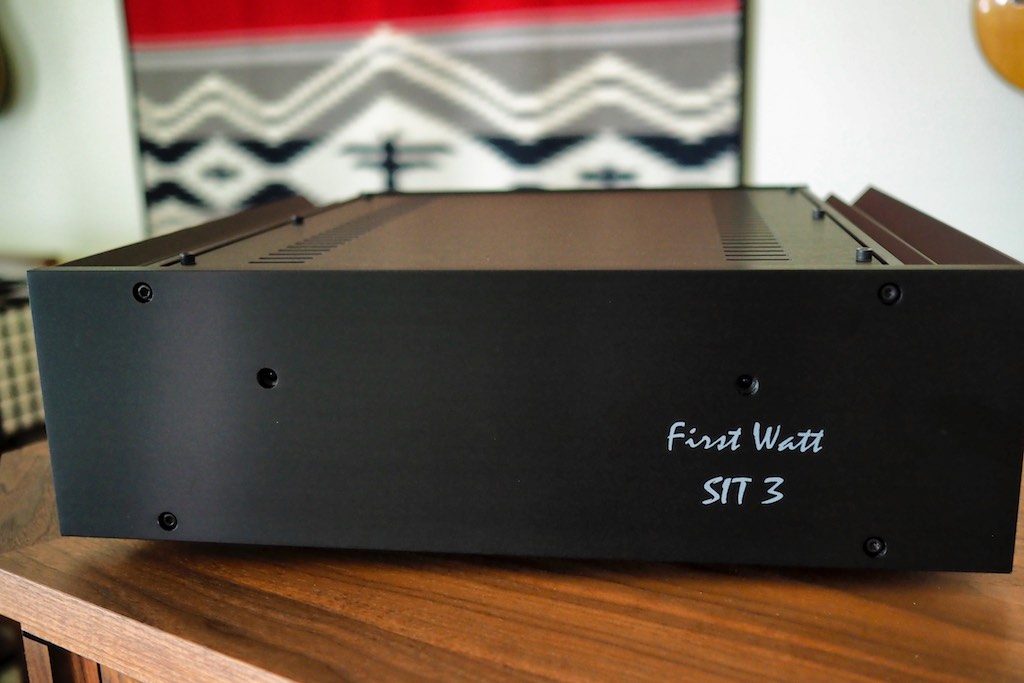
The First Watt SIT-3 stereo power amplifier.
I'm impressed with the Audio Note (UK) AN-K/SPe loudspeakers even with just this quick operational test, as they are exceptionally musical, and sound great in typical visuospatial terms as well, and positive first impressions like those are a great way to start out a relationship with a new pair of loudspeakers.
Given my collection of loudspeakers are all gigantic beasts - my vintage Altec loudspeaker collection, and my Tannoy Westminster SE loudspeakers - I was wondering how I would get along with smaller loudspeakers like the Audio Note (UK) AN-K/SPe loudspeakers.

Audio Note (UK) AN-K/SPe loudspeakers in front of Tannoy Westminster Royal SE loudspeakers.
My first impressions are that the Audio Note (UK) AN-K/SPe loudspeakers don't sound 'small' at all, in fact they are filling my largish living room easily, and if blindfolded, you might think you were hearing the big Westminsters playing rather than the Audio Note (UK) AN-K/SPe loudspeakers.
The pricing of the Audio Note (UK) AN-K/SPe loudspeakers is $5665 USD per pair, and the AN-K stands are $936 USD per pair.
Ok, I've run out of time for writing this morning, so stay tuned for much more about the the Audio Note (UK) AN-K/SPe loudspeakers in future posts.
As always, thanks for stopping by, and may the tone be with you!



























